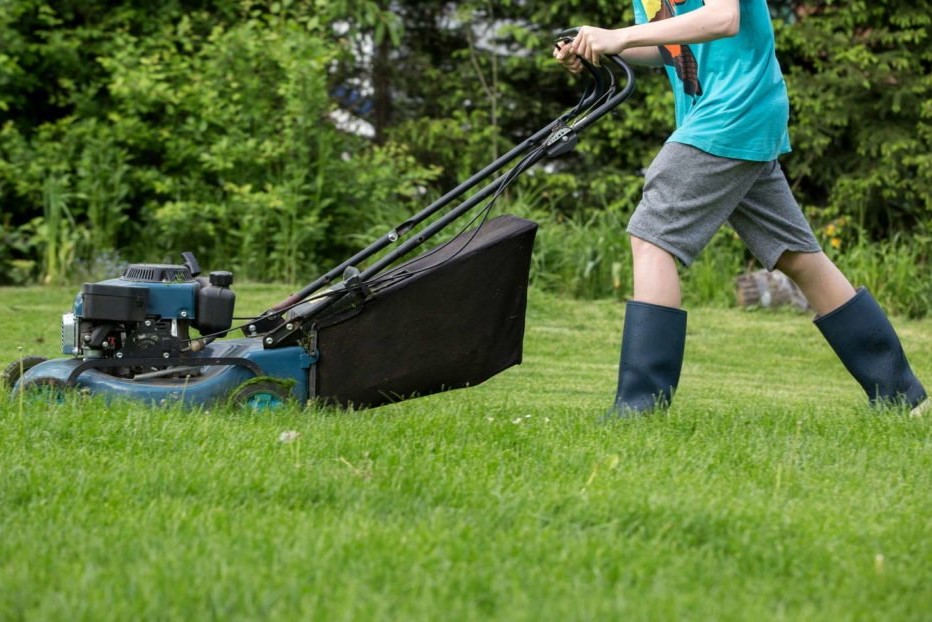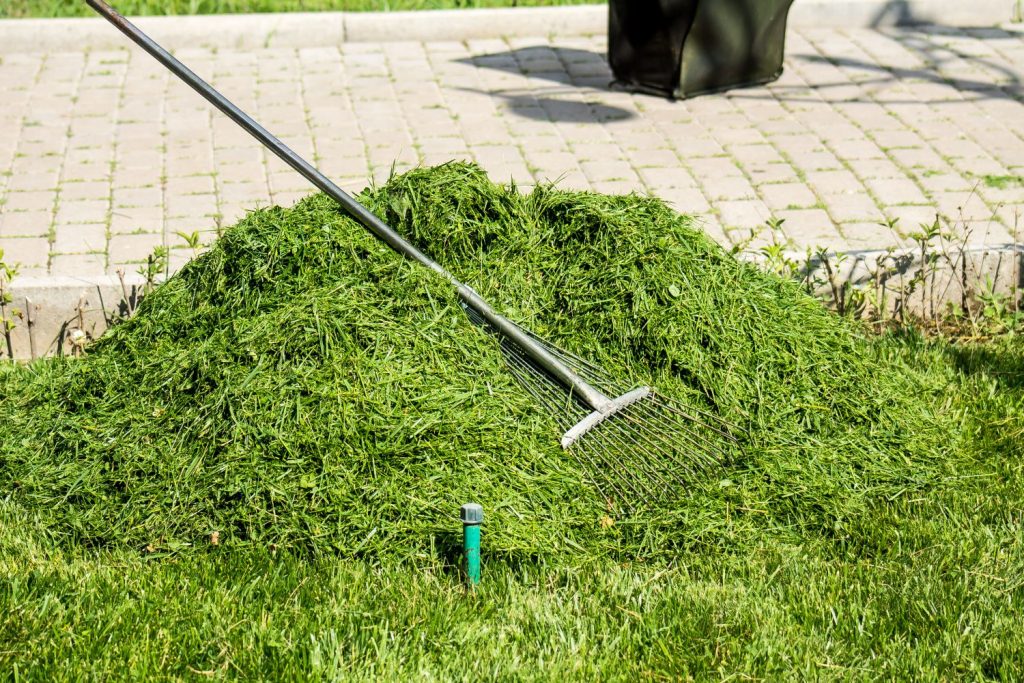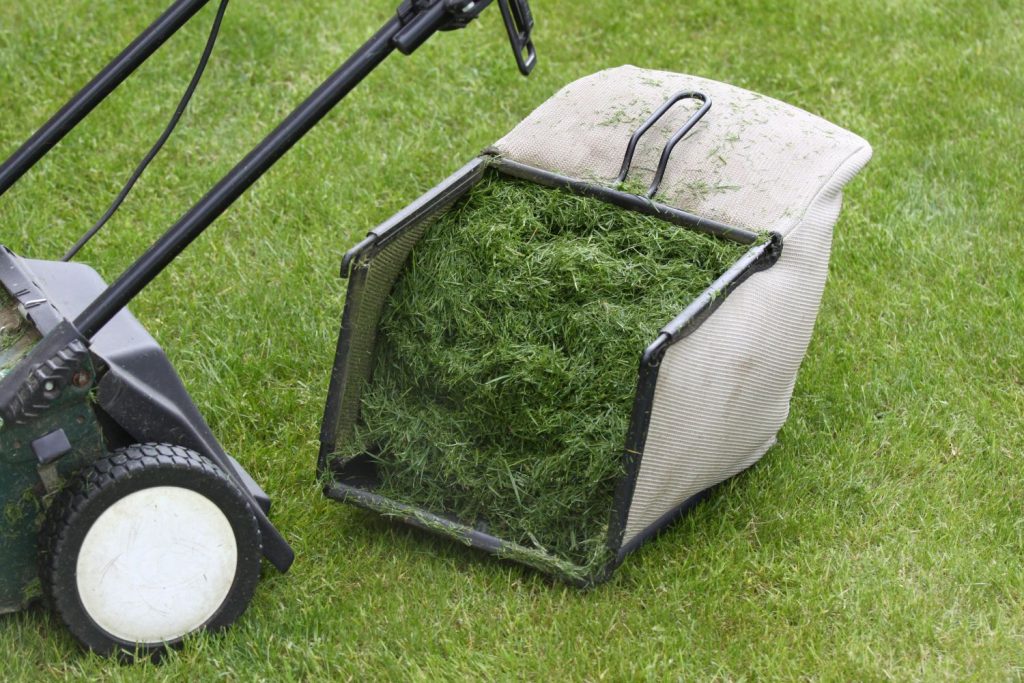A well-kept lawn needs to be cut regularly. But which is actually better: mowing the lawn or rather mulching? We compare both methods.

The question of whether it’s better to mow or mulch your lawn causes heated debate among many amateur gardeners. Some are merciless advocates of mulching, others never have and never will try it. Prejudices often play a major role in these discussions. Some know only mowing, others only mulching. We can tell you one thing right at the beginning: You can’t recommend one or the other across the board. Depending on the lawn, location and soil conditions, mulching or mowing may make more sense. We look at the advantages and disadvantages of both methods objectively.
Contents
- 1 Mowing the lawn: advantages and disadvantages
- 2 Disadvantage: loss of nutrients
- 3 Advantage: Clean appearance of the lawn.
- 4 Advantage: Less time required
- 5 Benefit: Lawn and soil benefit from nutrient return.
- 6 Disadvantage: Higher time expenditure
- 7 Disadvantage: Not suitable for every location
- 8 The bottom line: mowing or mulching the lawn?
- 9 Author
Mowing the lawn: advantages and disadvantages
Generally, lawn mowing is the shortening of the lawn with the help of a lawn mower, where the grass cuttings are collected and collected in an attached catch basket.
Disposing of lawn clippings can be easy and quick in small villages where the public compost site is just around the corner. In this case, disposing of it in any case would not be a reason to decide against mowing the lawn. Increasingly, however, municipalities are seeing a decline in shared composting sites, so the haul can be much longer and more costly. This argument for mowing the lawn with a basket is therefore not universally valid.
Disadvantage: loss of nutrients
Another disadvantage of lawn mowing, and an important one from an ecological point of view, is the loss of nutrients collected in the grass. As the grass grows up, nutrients are pulled out of the soil. If you can’t imagine how many nutrients grass contains, think of a cow that can theoretically live on cut grass alone (plus the help of rumen microbes) and even produce small amounts of milk from it. If the cut grass is disposed of, many nutrients that are in the cut grass are lost to the lawn and soil and can only be replaced by fertilizer. Ecologically, it makes the most sense to save on transportation when disposing of lawn clippings, while also reducing transportation for purchased fertilizer by closing the nutrient loop in your own yard. Those who do not like to mulch the lawn can compost the grass clippings themselves on a compost pile and then use the fertilizer in the form of compost for flowers or vegetables.

Advantage: Clean appearance of the lawn.
Of course, one visual advantage of mulching is that it always looks clean when freshly cut. After mulching, it takes a day or two before the mulched grass clippings are no longer visible. However, when arguing with the visual component, you should also consider that the mulched lawn has a much greener and healthier color due to the better nutrient supply.
Advantage: Less time required
The biggest advantage of mowing, and at the same time the most important reason against mulching, is the frequency of these two measures. Those who mow will likely have to spend a little less time on the lawn, as the lawn is allowed to grow a little longer between mowings than with mulching.
Lawn clippings can be self-composted and used as fertilizer for flowers. Mulch provides nutrients to the soil (like a fertilizer), improves soil life and soil structure
More useful in certain soil conditions (see mulching) Less drought-resistant in summer

Mulching lawn: Advantages and disadvantages
Lawn mulching is when grass is cut with a special mulching mower. This device has no catch basket, chops the cut grass small and then spreads it on the mowed lawn as “mulch”.
This method is becoming increasingly popular. Firstly, because it is becoming more difficult or takes longer for many people to transport the grass cuttings to a public composting site. Furthermore, because there is probably an increasing ecological awareness of this method.
Benefit: Lawn and soil benefit from nutrient return.
For lawn, soil and nature, mulching is definitely the best form of lawn cutting. This is because the nutrients bound in the lawn clippings remain where they came from. By mineralizing the lawn clippings, which means they decompose, soil life is enhanced. Mulching has a similar effect on the soil as fertilizing with compost. The nutrients contained in the grass clippings slowly become available again to the soil and lawn. Just like compost, mulching improves soil structure over the long term and makes the soil less likely to dry out in midsummer. Mulch is therefore only comparable to purchased fertilizer to a limited extent. For the lawn, both forms of fertilizer provide nutrients. However, mulch is much more valuable for the soil, and thus at the same time for the lawn and its roots.
Disadvantage: Higher time expenditure
Unfortunately, there is also a catch to this seemingly wonderful mulching method. The principle of mulching only works if the lawn is not covered with mulch. This is because it causes the lawn to receive too little light, the mulch rots poorly and the lawn literally suffocates. Therefore, the lawn must already be mulched as soon as 2 to 3 cm of lawn clippings accumulate. If you want to mow the lawn to a depth of 5 cm, you therefore have to mulch it as soon as it reaches a length of seven to a maximum of 8 cm. This means that on average you have to get out the mulching mower once a week.

Disadvantage: Not suitable for every location
Sites that are naturally prone to heavy moss and lawn thatch formation due to poor soil conditions are unfortunately less suitable for mulching. These include heavy, poorly permeable soils, shady or rainy locations, or at worst, a combination of these factors. For these sites, mulching is not generally out of the question, but it would have to be done very consistently and only when conditions are dry, cutting no more than 2 inches. Otherwise, the risk for poor decay of the mulch and consequent promotion of moss and lawn thatch is too great.
Similarly, mowing may be preferable to mulching on very sandy soils. In sandy soils, the soil organisms responsible for mulching are less active. Mulching does not work well, especially in dry regions with sandy soils that are often very dry in the summer.
In those disadvantaged locations, an in-house compost to which the lawn clippings or a portion of them are added may be a better and easier way to build an in-garden nutrient cycle.
Closed nutrient cycle Requires more frequent mulching than mowing
Less fertilization needed
On heavy, shady or wet soils, there is a higher risk of moss and soil felt formation
Has a positive effect on the soil (soil life, drought resistance, etc.) Mulching is not well suited for very sandy, heavily dried out soils
Beautiful green lawn color due to high nutrient supply Immediately afterwards no clean appearance
No need to dispose of the lawn clippings
By the way, mulching only partially replaces lawn fertilizing. If you mulch your lawn, you can fertilize less regularly or in smaller amounts, but you should not completely abandon it.

The bottom line: mowing or mulching the lawn?
Despite the illumination of all advantages and disadvantages, a basic recommendation for mowing or mulching is not possible. From an ecological point of view, mulching is clearly advantageous. The time required, on the other hand, is more in favor of mowing. Under certain soil and site conditions (heavy or very sandy soils, humid regions) we would rather recommend mowing and independent composting. Under ordinary circumstances, the decision to mow or mulch the lawn probably remains a matter of conviction and the amount of free time one is willing and able to devote to the lawn.









